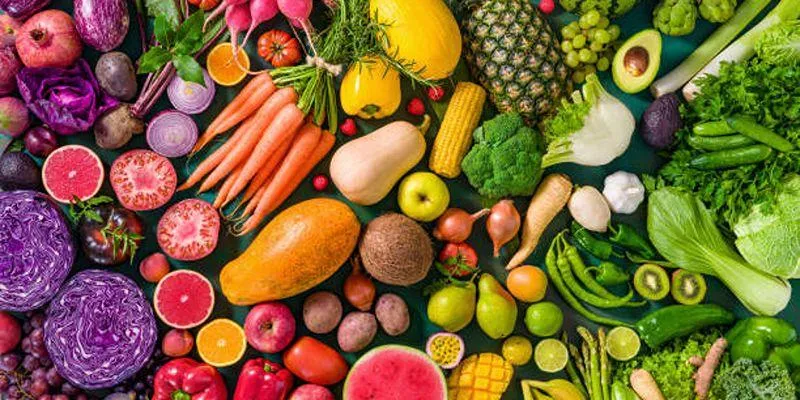Top Foods Rich in Ferulic Acid and Their Health Benefits
There is an antioxidant known as ferulic acid, which is present in many plant- based foods. This nutrient is gradually gaining popularity as many people associate it with numerous health benefits, including overcoming oxidative stress, improving heart health, and enhancing general well-being. Unlike chemical antioxidants, ferulic acid is a natural compound that can be assimilated through a normal diet, making it easy to add value to one’s life. In this guide, you will learn about foods rich in ferulic acid, the specific advantages of its consumption, and how you can incorporate them into your daily meals.
What Is Ferulic Acid?

Ferulic acid is a significant member of the polyphenolic group and is primarily located in the cell walls of plants. It exists in the form of vitamin antioxidants, which play a crucial role in eliminating oxidative stress or free radical damage. Damage induced by oxidative stress can progress cell and tissue damage, aging, and chronic diseases, so advantageous antioxidants like ferulic acid are vital. Moreover, ferulic acid also possesses anti-inflammatory properties and can be potentially helpful for cardiovascular health, skin health, and antibody production throughout the body.
The Health Benefits of Ferulic Acid
Ferulic acid offers a multitude of health benefits, primarily stemming from its antioxidant and anti-inflammatory properties. By reducing oxidative stress, it contributes to improved cardiovascular health, skin protection, and a strengthened immune system.
Antioxidant Powerhouse
One of the primary benefits of ferulic acid is its ability to neutralize free radicals. This antioxidant action helps protect cells from damage, reduces inflammation, and can even slow down the aging process. Unlike other antioxidants, ferulic acid remains stable at high temperatures, which enhances its effectiveness.
Heart Health Support
Studies have shown that ferulic acid can improve heart health by reducing blood pressure and inflammation. Its anti-inflammatory properties contribute to better blood flow and overall cardiovascular health, lowering the risk of conditions like atherosclerosis and hypertension.
Enhanced Skin Health
Ferulic acid has also gained popularity in skincare due to its ability to protect skin cells from UV damage. Often used in topical serums, this compound helps reduce wrinkles and age spots by neutralizing environmental toxins. When consumed through food, ferulic acid offers internal support to maintain healthy, glowing skin.
Possible Anti-Cancer Effects
Research suggests that ferulic acid may have anti-cancer properties by slowing the growth of certain cancer cells. Its antioxidant and anti-inflammatory effects play a role in reducing the risk of cellular mutations, which could prevent the development of certain types of cancer.
Foods High in Ferulic Acid
Many common foods contain ferulic acid, especially those rich in plant-based fibers. Incorporating these foods into your diet can help you enjoy the numerous benefits of ferulic acid.
Whole Grains
Whole grains like brown rice, oats, wheat, and barley are excellent sources of ferulic acid. These grains contain ferulic acid within their bran, the outer layer of the grain, making them a highly nutritious choice. Whole grains are also rich in fiber, which benefits digestive health and supports blood sugar management.
Fruits and Vegetables

Certain fruits and vegetables, such as apples, oranges, spinach, and tomatoes, contain ferulic acid. Apples, in particular, are high in this nutrient, especially in their skin. Including these fruits and vegetables in your diet can provide you with a boost of antioxidants while enhancing your intake of essential vitamins and minerals.
Coffee and Grains
While many people think of coffee as simply a source of caffeine, it is also one of the best sources of dietary ferulic acid. Coffee contains chlorogenic acid, which breaks down into ferulic acid in the body, providing an antioxidant boost. Drinking coffee in moderation can contribute to your daily antioxidant intake, complementing other sources of ferulic acid.
Nuts and Seeds
Nuts and seeds like flaxseeds, sunflower seeds, and walnuts are packed with ferulic acid and other essential nutrients. These foods not only provide heart-healthy fats but also support immune function and offer anti- inflammatory benefits.
How to Add Ferulic Acid to Your Diet?
Incorporating ferulic acid-rich foods into your diet doesn’t require a complete dietary overhaul. Here are some practical tips to help you increase your intake of this beneficial antioxidant.
Start Your Day with Whole Grains
Kickstart your morning with whole grains like oatmeal or whole-grain toast. Adding flaxseeds or sunflower seeds to your breakfast can give you an added boost of ferulic acid. You can also experiment with quinoa or brown rice as a side dish in your main meals.
Snack on Fruits and Nuts
For a quick and healthy snack, try apples or oranges paired with a handful of walnuts or sunflower seeds. This combination offers a delicious mix of ferulic acid, fiber, and essential vitamins, making it perfect for an antioxidant-rich snack.
Enjoy Coffee in Moderation
If you’re a coffee drinker, rest assured that your habit is contributing to your antioxidant intake. Limit yourself to one or two cups daily to gain the benefits without overdoing the caffeine. If you prefer herbal options, teas like chamomile and peppermint also offer modest amounts of ferulic acid.
Conclusion
Ferulic acid is a potent antioxidant that offers numerous health benefits, from protecting cells against oxidative stress to supporting heart and skin health. By incorporating ferulic acid-rich foods into your diet, you can naturally boost your health and well-being. Whole grains, fruits, vegetables, nuts, and even coffee are simple and delicious sources of this nutrient. Each of these foods provides unique flavors and health benefits, making it easy to add ferulic acid to your daily routine. So, take advantage of these nutrient- rich foods and harness the power of ferulic acid for a healthier, more vibrant life! By making small changes to your meals, you can enjoy the delicious flavors while reaping the significant health rewards that come with them.











